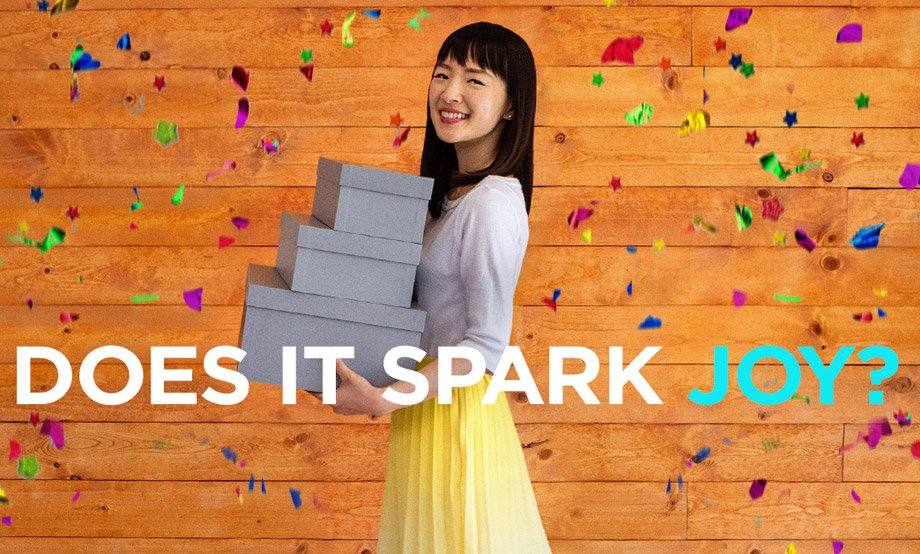One of my favorite Netflix binge watches is “Tidying Up with Marie Kondo.” If you haven’t seen this show yet, then let me tell you about her. Marie is a Japanese tidiness consultant and author who has written four books on organizing that have collectively sold millions of copies. She helps people sort, discard (the hardest part), and organize their belongings through her process known as the KonMari method. This consists of gathering together all of one’s belongings, one category at a time, then keeping only those things that “spark joy,” and finally choosing a place for everything. I’ve actually put her process to work in my house (with the help of my sister and niece), which desperately needed organizing after my two older sons moved out on their own.
Applying Marie’s Principles to My Digital Life
Once I got my house in order, I took a long look at my digital life. I found that I have files in lots of different places: Google, several external hard drives, OneNote, Dropbox, and a variety of flash drives. Each one of those “data containers” was organized differently, if organized at all. In addition, I had several CDs of old family photos that were just haphazardly lying around since I didn’t know what to do with them. None of this was “bringing me joy.”
So I looked at Marie Kondo’s principles and started applying them to my digital storage life. Here’s what I came up with:
Principle 1: Tackle things by category, not by “room.” While it seems to make sense to begin the process by looking first at work files, then home, then family, etc., that is not true to Marie’s tidying concept. So I started with categories instead, organizing them by ebooks/magazines, recipes, work ideas, vacations, presentations, TCEA board, TCEA staff, photos, etc. The key to this principle is to start with those items that have less emotional meaning as they are easier to do. So photos should definitely come last, at least for me.
Principle 2: Make sure nothing can distract you while tidying. That means no listening to music, no checking your email or social media, no family or friends or pets helping you. Just you and your digital stuff.
Principle 3: Don’t relive the past. While it was very tempting to stop and read every file and look at every photo and reminisce about how I acquired it, that would be a very bad idea. It would simply mean that I would never get finished with the job. Be quick. Don’t take time for memories at this stage of the process.
Principle 4: Delight in the purge! I have to admit that the first several hundred files I ruthlessly trashed because they didn’t “bring me joy” were painful. But after that, I experienced an epiphany: Getting rid of stuff that I didn’t need felt SO GOOD! I felt freed when I didn’t have to keep a document that I might someday use for professional development, even though I had had it for years and never touched it. I felt true joy when I got rid of old photos of people that I didn’t even know. I felt lighter as I saw the mass of my files becoming less and less. Cleaning up my digital life really did bring me joy!
Principle 5: Decide on an organization system that works for you. While Marie’s tidying system has you learning to fold clothes in certain ways and keeping everything neatly organized in boxes, that may not work for you and your digital files. Instead, consider how you think and then create a system so that you can easily find exactly the file or photo you are looking for. I basically used an alphabetical system grouped around categories like professional development, TCEA, writings, food, photos, vacations, and others. But find one that works for you.
Principle 6: Celebrate when you are done. Once the process is over, it’s time to celebrate all of your hard work. I did that by creating a running slideshow of many of the photos that had been hidden for years so that I can now see them every day. My family has enjoyed seeing them, too, and it’s sparked many an emotional story being told about someone close to us.
The Results of My Tidying Up
Now that I’m done with this process for my digital files, I can honestly say that I am happier. Finding that certain document is much easier now. I get a real rush when I look at my data and see how slim and organized it is. And I love knowing the true value of everything that I saved. I also now know what matters to me, digitally, and so have a better understanding of how to maintain this organization as I move forward.
My next project will be to see if my online digital life needs some work. I’ll follow the same principles for my profiles on Facebook, LinkedIn, Twitter, etc. I’m pretty sure that all of them could use some tidying up!

